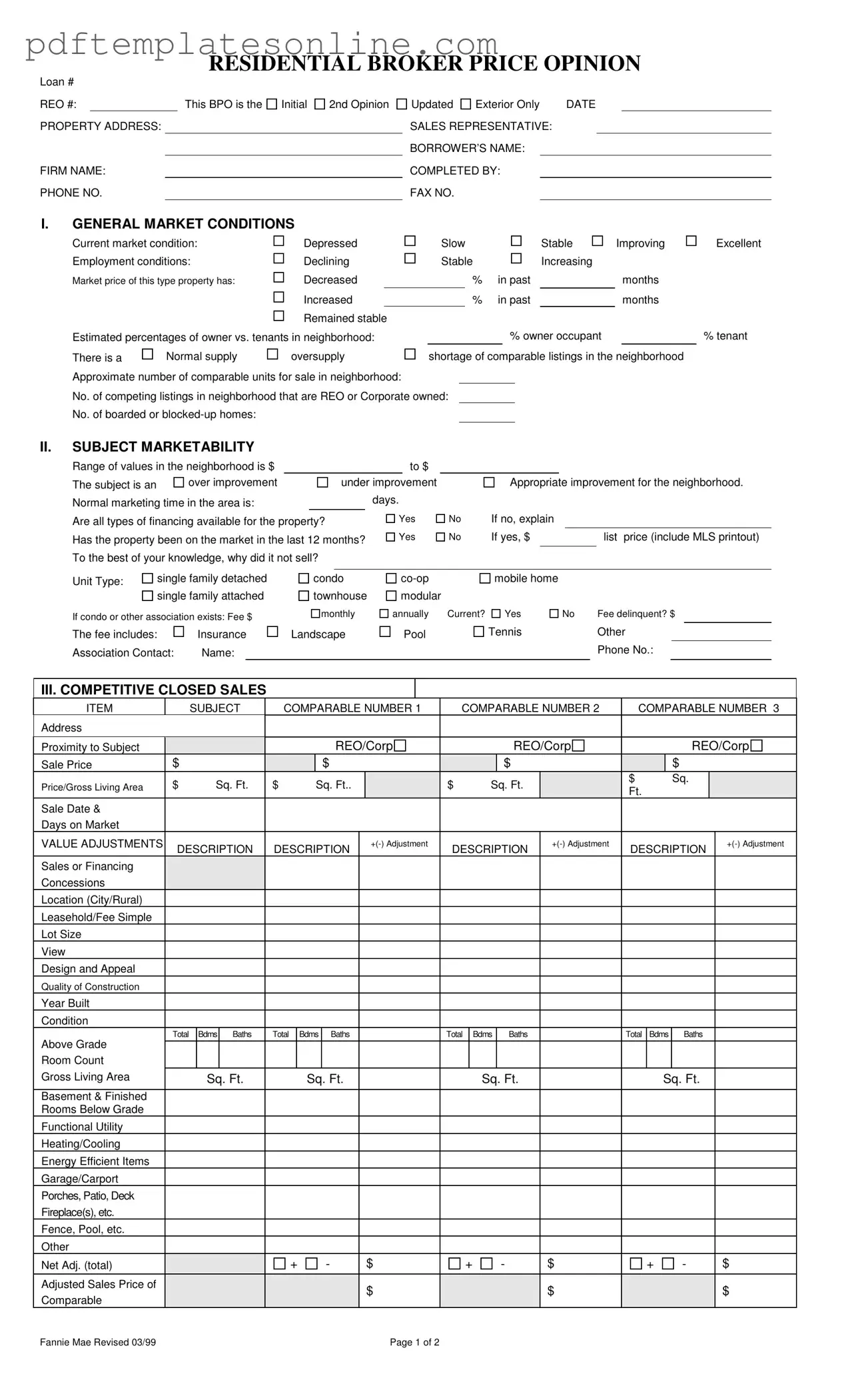Detailed Guide for Writing Broker Price Opinion
Filling out the Broker Price Opinion (BPO) form requires careful attention to detail. Each section of the form gathers important information about the property and its market conditions. Follow these steps to ensure you complete the form accurately.
- Begin with the top section. Fill in the Loan #, REO #, and PROPERTY ADDRESS.
- Provide your FIRM NAME and PHONE NO.. Indicate whether this is an Initial, 2nd Opinion, or Updated report.
- Enter the DATE and the name of the SALES REPRESENTATIVE.
- Complete the BORROWER’S NAME and COMPLETED BY sections, along with FAX NO..
Next, move on to the general market conditions. This section requires you to assess the current market and employment conditions. You will also need to estimate the market price trends and the ratio of owner-occupants versus tenants in the neighborhood.
- Describe the Current market condition as Depressed, Slow, Stable, or Improving.
- Assess the Employment conditions: Declining, Stable, or Increasing.
- Indicate the market price trend: Decreased, Increased, or Remained stable.
- Estimate the percentage of owner-occupants in the neighborhood.
- Determine if there is a normal supply, oversupply, or shortage of comparable listings.
- List the approximate number of comparable units for sale.
- Count the number of competing listings that are REO or Corporate owned.
- Note the number of boarded or blocked-up homes.
Proceed to evaluate the subject property’s marketability. This involves determining its value range, improvement status, and marketing time.
- Provide the range of values in the neighborhood.
- Assess if the subject property is an over improvement, under improvement, or appropriate for the neighborhood.
- State the normal marketing time in days.
- Indicate if all types of financing are available for the property.
- Note if the property has been on the market in the last 12 months and provide the list price if applicable.
- Identify the unit type (e.g., single family detached, condo, etc.).
- If applicable, fill in the association fee details.
Next, you will analyze competitive closed sales. This section requires you to gather data on comparable properties.
- List details for up to three comparable properties, including address, proximity, sale price, and sale date.
- Make value adjustments based on various factors such as location, size, and condition.
- Calculate the adjusted sales price for each comparable.
Now, focus on the marketing strategy and repairs needed. This part helps determine how to present the property effectively.
- Choose the marketing strategy: As-is, Minimal, or Lender Required Repairs.
- Indicate the occupancy status of the property.
- Identify the most likely buyer.
- Itemize all repairs needed to make the property marketable.
- Calculate the grand total for all repairs.
Finally, analyze competitive listings and determine the market value. This section summarizes your findings.
- List details for comparable properties, including address and list price.
- Make necessary value adjustments.
- Determine the market value and suggested list price.
- Provide comments on the property, including any concerns or notable features.
- Sign and date the form to complete the process.
Once you have filled out the form, review it for accuracy before submission. This thorough process will help ensure that you provide a reliable opinion on the property's value.
